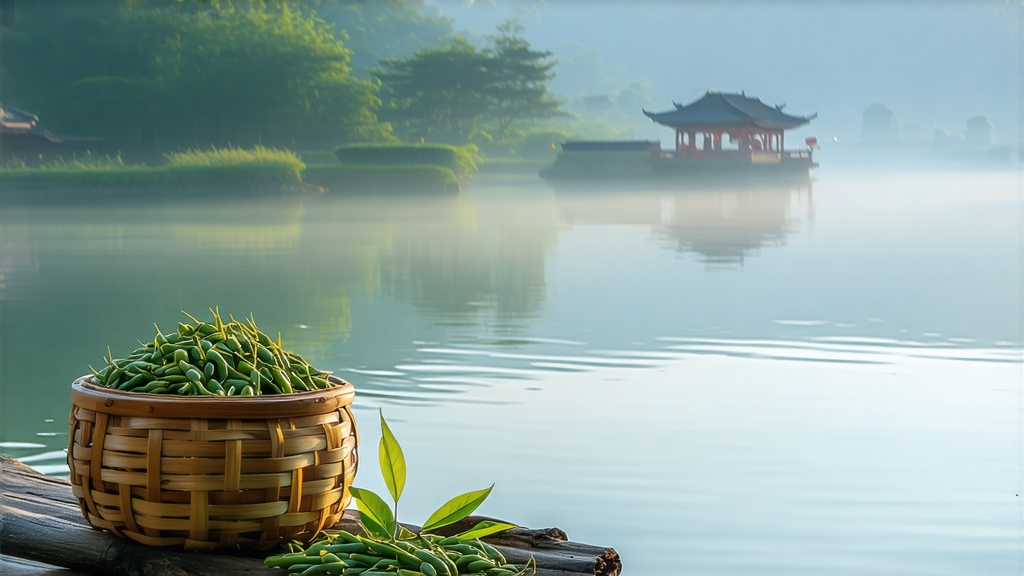
Tucked between the mist-cradled foothills of Dongting Mountain and the gentle ripples of Lake Tai in Jiangsu Province, Biluochun—literally “Green Snail Spring”—has for three centuries been the jewel of Chinese green teas. Foreign gazetteers once rendered its name as “Pi Lo Chun,” but whatever the transliteration, the tea remains a curled comma of early spring, a pause in the year when earth, water and human hand conspire to trap an entire season inside a single downy bud. To understand Biluochun is to listen to a soft-spoken story of terroir, Ming-dynasty accident, and the Chinese conviction that the smallest leaf can contain the largest landscape.
History: From Wild Fragrance to Tribute
Local chronicles credit the discovery to tea pickers who, in 1675, wandered into a thicket of peach and apricot trees on Dongting’s east ridge. The wild tea growing beneath the fruit canopy had absorbed their perfume; when the leaves were fired that night, the room filled with an aroma so startling that the county magistrate sent samples to the Kangxi Emperor. The Qing court christened the tea “Xia Sha Ren Xiang”—“Scary Fragrance”—but the scholar-king, amused by its snail-like coil and spring harvest, renamed it Biluochun in 1703. For the next 250 years, only 900 g reached the Forbidden City each April, carried by canal boat and presented in sealed bamboo tubes lined with lotus leaves. Commoners brewed chrysanthemum; Biluochun belonged to emperors, poets and the mountain monks who guarded its grafted cuttings.
Terroir: Where Lake Breath Meets Mountain Mist
Dongting Mountain is actually two islands—Dongshan and Xishan—rising from Lake Tai like the backs of submerged dragons. The lake’s 48 creeks moderate temperature, creating nightly fogs that act as a natural shade cloth, slowing photosynthesis and concentrating amino acids. Soils are quartz-sandstone mixed with weathered granite, porous yet water-retentive; drainage is so swift that roots dive deep for minerals, accounting for Biluochun’s signature “mineral-sweet” finish. Around the tea gardens, plum, loquat and bayberry trees bloom in synchrony with the tea, their pollen settling on the pubescent buds and contributing to a complex floral bouquet impossible to replicate elsewhere. Even within the 12 km² core zone, micro-parcels are recognized: “Bird’s Nest Cliff” yields leaves with orchid notes, while “Stone House Hollow” produces a whisper of almond milk.
Cultivars: Two Sisters and a Wild Cousin
The classic cultivar is Dongting Small-Leaf Species, a landrace with leaves barely 2 cm long and 1.2 cm wide, whose high theanine/low catechins ratio gifts a creamy sweetness. Since 1985, breeders have released F1 hybrids such as Biluochun 2号, which withstands sporadic spring frost, yet purists insist only the old strain develops the proper “white down, hidden green” look. On the western shore, a purple-leaf mutation nicknamed “Zibei” offers anthocyanin-rich liquors the color of pale amethyst, while high ridges still host a wild hexaploid that botanists call Camellia sinensis var. biluochunensis; its tiny yield is coveted by tea-masters for competition-grade batches that fetch 30 000 yuan per 500 g.
Plucking: One Bud, One Leaf, One Dawn
Harvest begins when lake mist still clings to bamboo hats. Standards are merciless: only the “bud just unfolded, leaf still boat-shaped” pair is taken, leaving the third leaf to power next week’s growth. Experienced pickers finish before 9 a.m., when sunlight strengthens and enzymatic activity accelerates. A full kilo of fresh leaf contains 9 000 such pairs; after firing, that mountain shrinks to 250 g of finished tea. To prevent bruising, leaves rest in shallow bamboo trays lined with mosquito-net silk, carried downhill on shoulder poles padded with tea towels—any compression at this stage would blacken the tips and destroy the prized “three whites” (white down on bud, petiole and first leaf serration).
Craft: The 10-Minute Ballet of Heat and Hand
Biluochun is the only famous green tea still entirely hand-fired in cast-iron woks brushed with Dongting